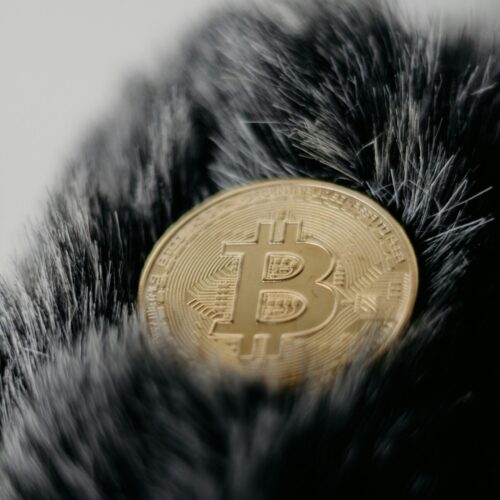Bitcoin Consultation
Bitcoin Alchemy: Transforming Wealth with Expert Guidance
We simplify getting exposure to bitcoin for High Net Worth Individuals, Family Offices and Businesses.



Our Clients
Who We Work With?
- Plan Your Purchase:
We will help you plan your purchase and get your exposure with the right strategy.
- Getting Exposure:
We seamlessly facilitate the purchase at competitive rates for large tickets.
- Getting The Custody Right:
Our specialized services include self/collaborative custody and wallet management for significant portfolios.
- Customised Investment Strategy:
We help family offices find the right investment strategy, which aligns with their unique financial goals and risk tolerance.
- Access to Expertise:
We offer personalized advise, regular research, and insights in order to make informed decisions.
- Legacy Planning
We offer secure wallet implementation methods for seamless asset transfer to your heirs.
- Integrate Bitcoin Payments
We facilitating tools to integrate bitcoin payments into your business.
- Wallet Management & Security
We help businesses set up diversified wallet structures with no single points of failure.
- Bitcoin as a Treaury Reserve Asset
We guide businesses to integrate bitcoin into their balance sheet as a treasury reserve asset.
Recovered funds from wallets known to be lost!
Years of experience in the banking industry
Years of combined experience in the crypto industry
Individuals and companies on-boarded on Bitcoin
Top-Notch Consultation
Delivering a unique
and tailored experience
Introducing you to the fascinating realm of bitcoin and cryptocurrencies and ensure you swiftly grasp every essential detail.
-
Wallet Management & Security
-
Financial Consultation
-
Legacy Planning


Self-Custody Advisory
Enhance your Bitcoin Storage Security
Securely purchase and protect your bitcoin with our trustworthy advisories. Get expert recommendations on reputable exchanges with advanced security measures for reliable transactions.
-
Self-Custody Best Practices
-
Bitcoin Integration Solutions
-
Legacy Planning
Collaborative Custody
Best way to secure
your Bitcoin
Introducing a modern collaborative bitcoin wallet with seamless integration of native features, providing a secure and user-friendly experience for managing your digital assets.
Experience the power of bitcoin with ease and convenience.
-
Modern Bitcoin Wallet
-
2-of-3 Multi-Sig Vaults
-
Coming Soon!!

Our Solutions
Expert Advisory at your service
Bitcoin Payment Integration Solutions
Streamlining the integration of Bitcoin payments into your business has never been easier!
We help you implement Bitcoin as a payment gateway into your business and set up a robust infrastructure tailored to your business's scale and requirements, ensuring maximum security with efficient Security Protocols.
Legacy Planning
Setting up secure "legacy" wallets for seamless asset transfer to your loved ones.
Our Dead Man's Switch Solutions automate access to bitcoin wallets upon confirmation of passing, while collaboration with estate planning lawyers ensures comprehensive support.
Financial Planning
Bitcoin has helped millions of individuals to retire early. Explore the benefits of holding bitcoin as a reserve asset.
Understand the long-term implications and strategies of holding Bitcoin through "Strategic Holding (HODLing)" .
We provide strategic financial consultation for your unique circumstance.
Wallet Management & Security
We offer guided consultation for setting up a simple wallet to incorporating advanced wallet setups by implementing Passphrase/Multi-signature solutions to enhance security protocols.
Implement efficient transaction procedures at an enterprise level with Organizational Transaction Protocols and explore Advanced Techniques such as batch transactions, RBF, and SegWit.
Why Bitcoin?
In an era of persistent inflation, bitcoin offers a safeguard against the devaluation of government currencies. Its unique blend of gold's scarcity and the convenience of paper currency establishes it as a premier digital asset.
Help center
Not sure where to start?
Look no further
Quick answers to questions you may have. Can't find what you're looking for? Get in touch with us.
In today's financial landscape, grasping the intricacies of Bitcoin remains a considerable challenge for many. The level of understanding varies greatly depending on individuals' backgrounds and experiences.
At 21st Capital, we recognize this complexity and have dedicated thousands of hours to demystifying Bitcoin and elucidating its distinctions from traditional currencies and assets.
Our expertise extends across diverse demographics, allowing us to effectively communicate the nuances of Bitcoin to individuals from various cultural, educational, and professional backgrounds worldwide. Whether you're a seasoned investor or new to the concept of digital currencies, our tailored approach ensures that you and your family can confidently navigate the evolving landscape of financial opportunities, including the realm of Bitcoin.
At 21st Capital, our team boasts a rich diversity and extensive expertise across multiple domains. With decades of collective experience in banking, finance, cryptography, Bitcoin, and data analytics, our members bring invaluable insights to the table.
What truly sets us apart is our ability to communicate fluently in English, German, Arabic, and Farsi. This linguistic versatility allows us to cater effectively to clients from diverse cultural and linguistic backgrounds. By understanding and addressing their specific needs and preferences, we provide comprehensive and personalized advice and services to individuals and families worldwide.
The likelihood of 21st Capital assisting you in recovering your funds depends greatly on your individual circumstances. However, it's worth noting that our team has a successful track record of recovering over $1 million worth of digital assets for our clients.
Utilizing advanced software and tools, we employ a meticulous approach to aid in fund recovery. While outcomes may vary depending on the specifics of each case, our expertise and dedication ensure that we exhaust every avenue to maximize the possibility of a successful recovery.
We maintain client data confidentiality through a combination of personalized service and strict adherence to privacy protocols, ensuring your journey into the bitcoin space remains fully secure and private.
Let's connect
We’re Here to Help
Unlock Bitcoin's potential with personalized guidance by bringing on insights from experts in the industry.
